Hiking in Ethiopia: Guide to Africa’s Mountain Paradise
Why GO HikING in Ethiopia?
Ethiopia offers hikers something truly special. This ancient land combines jaw-dropping landscapes, unique wildlife, and living cultural traditions you won’t find anywhere else, discover the magic of hiking in Ethiopia.
What makes Ethiopia different from other hiking destinations?
- Diverse landscapes – from 14,000+ ft mountains to below-sea-level desert
- Endemic wildlife – including rare species like the Ethiopian wolf and Gelada baboons
- Living history – trails pass through villages where traditions remain unchanged for centuries
- Uncrowded trails – experience nature without the tourist crowds of more popular destinations
- Cultural immersion – interact with local communities and explore ancient churches
Let’s explore Ethiopia’s best hiking destinations and everything you need to know for an unforgettable adventure!
Best Hiking Destinations in Ethiopia
1. Simien Mountains National Park
Why go: Often called “God’s playground,” this UNESCO World Heritage site features dramatic cliffs, deep valleys, and spectacular wildlife viewing.
Top trails:
- Classic Simien Trek (3-4 days) – Follow the escarpment edge from Sankaber to Chenek for breathtaking views and wildlife encounters
- Ras Dashen Summit Trek (5-7 days) – Challenge yourself to reach Ethiopia’s highest peak (14,928 ft)
- Community Trek (3-5 days) – Experience local culture with homestays in traditional villages
Wildlife highlights: Gelada baboons, Walia ibex, lammergeyer vultures
Difficulty: Moderate to challenging (altitude is a factor)
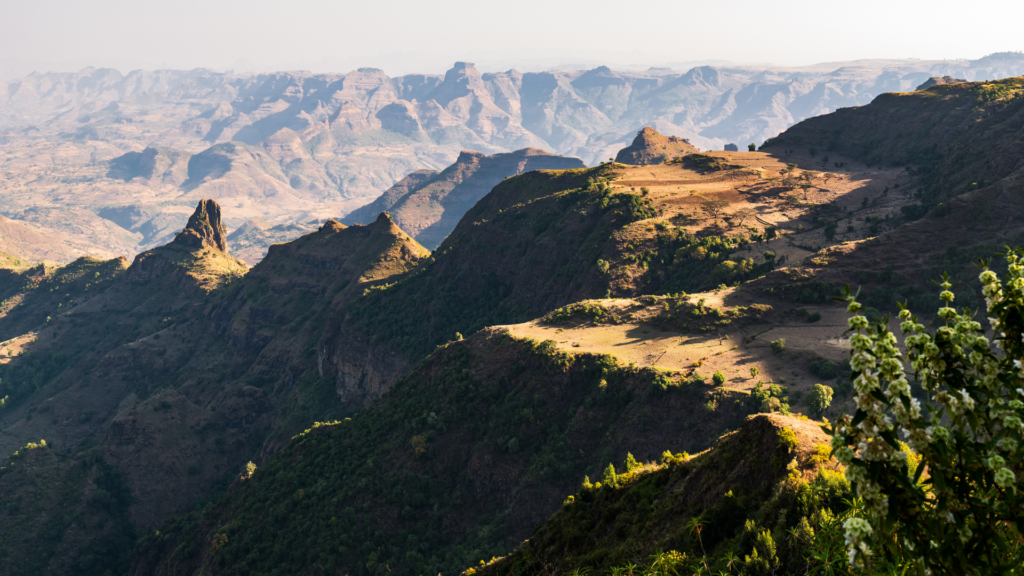
2. Bale Mountains National Park
Why go: Experience Africa’s largest alpine plateau and incredible biodiversity, including the best place to spot the rare Ethiopian wolf.
Top trails:
- Sanetti Plateau Traverse (3-4 days) – Cross an otherworldly landscape at 13,000+ ft
- Harenna Forest Trek (2-3 days) – Descend from the plateau into Ethiopia’s largest cloud forest
- Web Valley Circuit (4-5 days) – Best route for wildlife spotting, especially Ethiopian wolves
Wildlife highlights: Ethiopian wolves, mountain nyala, giant mole rats, numerous endemic birds
Difficulty: Moderate (high altitude but mostly gentle terrain)
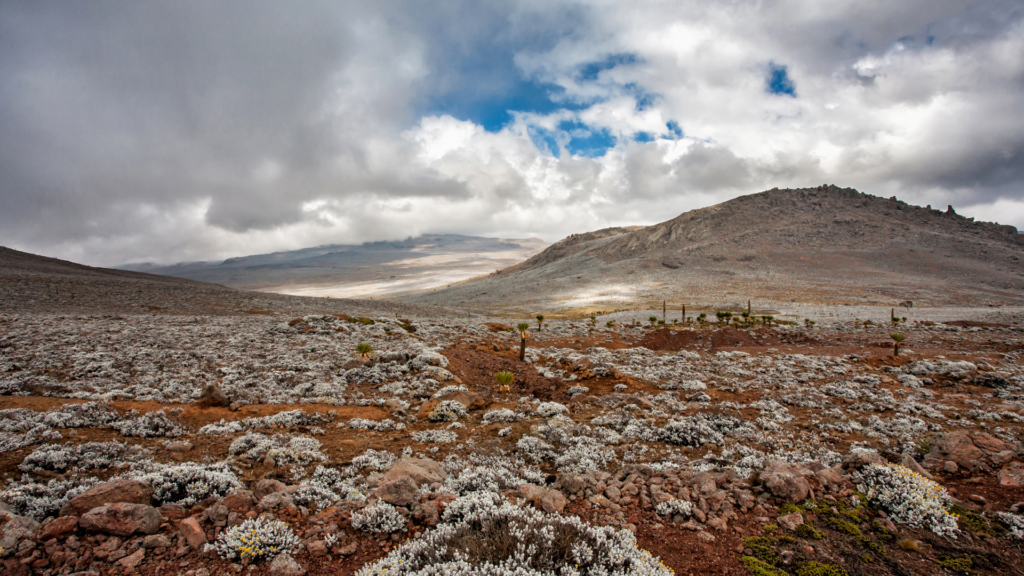
3. Erta Ale & Danakil Depression
Highlights: Ancient religious art, spectacular views, rock climbing challenges
Why go: Hike in one of Earth’s most extreme environments to see an active lava lake and alien-like landscapes.
Top experiences:
- Erta Ale Volcano Trek (2 days) – Night hike to witness one of only six permanent lava lakes in the world
- Dallol Geothermal Area (day hikes) – Explore colorful hot springs, acid pools, and salt formations
Highlights: Active lava lake, neon-colored mineral deposits, salt caravans
Difficulty: Challenging (extreme heat and basic conditions)
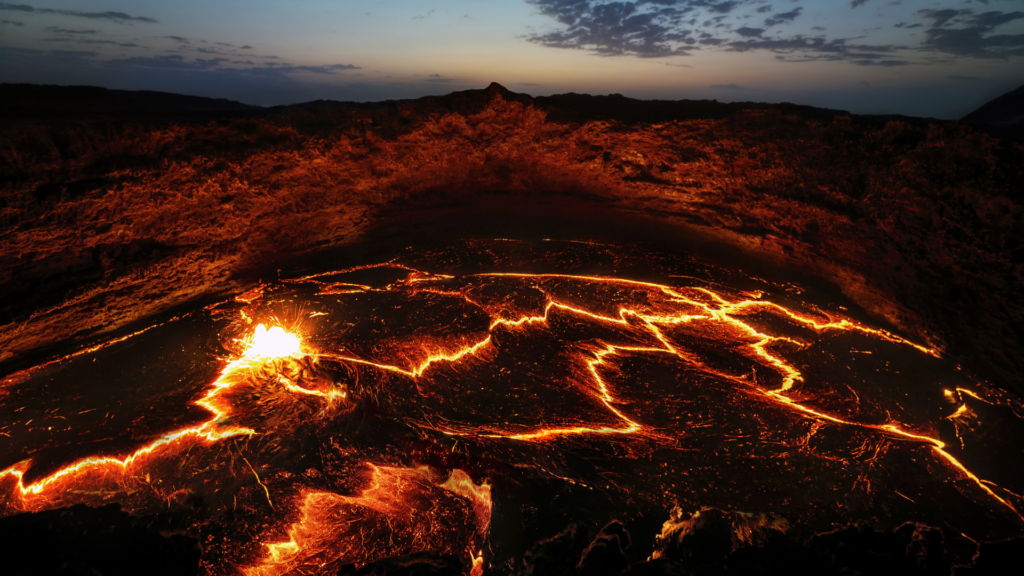
4. Wenchi Crater Lake
Why go: Perfect day hike from Addis Ababa with beautiful scenery and a mix of natural and cultural attractions.
Main trail:
- Crater Rim Circuit (5-6 hours) – Loop around the volcanic crater with a boat ride to a 13th-century monastery on the central island
Highlights: Crater lake views, hot springs, monastery visit
Difficulty: Easy to moderate
5. Tigray Rock-Hewn Churches
Why go: Combine hiking with cultural exploration as you climb to ancient churches carved into seemingly inaccessible cliff faces.
Top experiences:
- Gheralta Cluster (3-5 days of day hikes) – Access multiple ancient churches with varying difficulty levels
- Abuna Yemata Guh (half-day) – Challenging climb to reach a 5th-century church with well-preserved frescoes
For Danakil specifically
Difficulty: Moderate to very challenging (some churches require technical climbing)
When to Go: Best Seasons for Hiking in Ethiopia
Dry Season (October to March)
- Advantages: Clear views, reliable weather, easier trail conditions
- Disadvantages: More tourists (though still uncrowded by international standards)
- Best for: Most hiking destinations, especially Simien Mountains
Rainy Season (June to September)
- Advantages: Lush green landscapes, fewer visitors
- Disadvantages: Muddy trails, reduced visibility, some routes impassable
- Best for: Avoiding entirely, unless you’re experienced and prepared for challenges
Shoulder Seasons (April-May, September)
- Advantages: Fewer tourists, generally good conditions with occasional rain
- Disadvantages: Some unpredictability
- Best for: Bale Mountains, less challenging routes
Danakil Depression (Special Case)
- Only visit: November to early March
- Avoid: April to October (dangerously high temperatures)
What to Pack: Essential Gear
Clothing
- Lightweight, moisture-wicking layers
- Warm jacket for cold nights (temperatures can drop below freezing at high elevations)
- Rain jacket/windproof layer
- Sturdy hiking boots (well broken-in)
- Sun hat and warm hat
- Gloves (for higher elevations)
Equipment
- Backpack (30-40L for supported treks)
- Sleeping bag rated to at least 32°F/0°C (colder for high elevations)
- Headlamp with extra batteries
- Trekking poles (highly recommended)
- Water purification system (filter or tablets)
- Sun protection (strong sunscreen, sunglasses, lip balm)
- Basic first aid kit including blister treatment
Notable Ethiopian birds
- Extra water capacity (minimum 4-5 liters)
- Heat-appropriate clothing
- Bandana for dust protection
Required Documents & Permits
- Valid passport with Ethiopian visa
- Park entrance fees:
- Simien Mountains: ~400 ETB/day (~$7 USD)
- Bale Mountains: ~250 ETB/day (~$4.50 USD)
- Special permits for Danakil Depression (arranged through tour operators)
- Church entrance fees in Tigray (50-200 ETB per church)
- Travel insurance with evacuation coverage
- Yellow fever vaccination certificate (if arriving from affected countries)
Ethiopian Wildlife: What You Might See
Must-see endemic species
Ethiopian Wolf
- World’s rarest canid with fewer than 500 remaining
- Where to spot them: Sanetti Plateau in Bale Mountains
- Recognizable by: Red coat, elongated snout, fox-like appearance
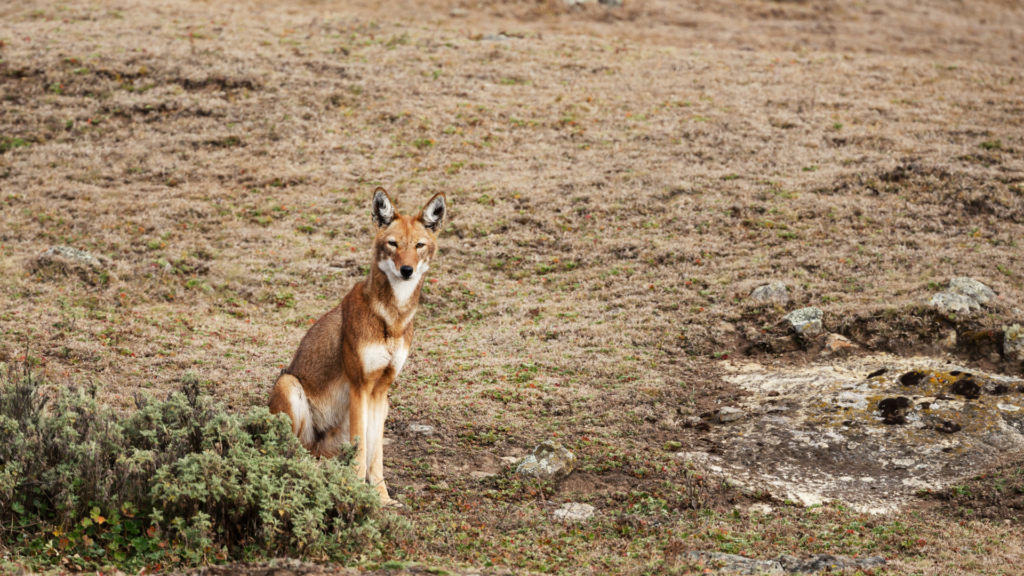
Gelada Baboon
- Unique grass-eating primates with distinctive red chest patches
- Where to spot them: Simien Mountains escarpment
- Look for: Large troops grazing on plateau grasslands

Walia Ibex
- Endemic wild goat with impressive curved horns
- Where to spot them: Chenek area in Simien Mountains
- Best time: Early morning or late afternoon
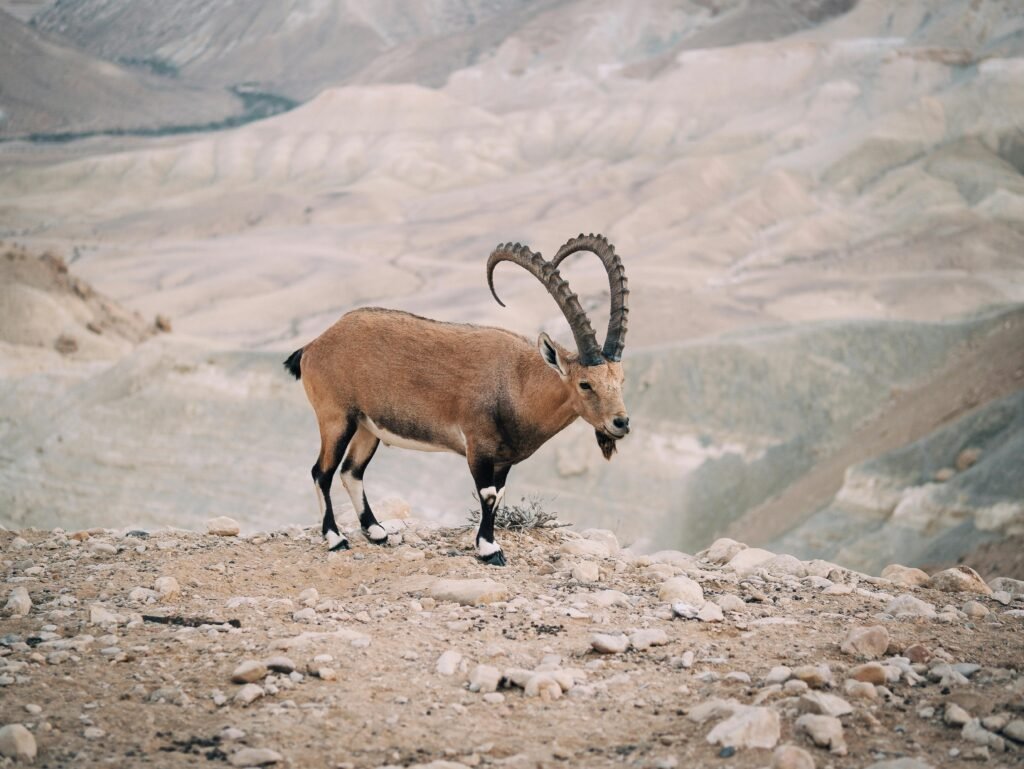
Mountain Nyala
- Spiral-horned antelope found only in Ethiopia
- Where to spot them: Gaysay Grasslands in Bale Mountains
- Most visible: Dawn and dusk
- Lammergeyer (bone-breaking vulture)
- Blue-winged Goose (endemic waterfowl)
- Wattled Ibis (endemic with distinctive red wattle)
- Rouget’s Rail (endemic, often seen crossing trails)
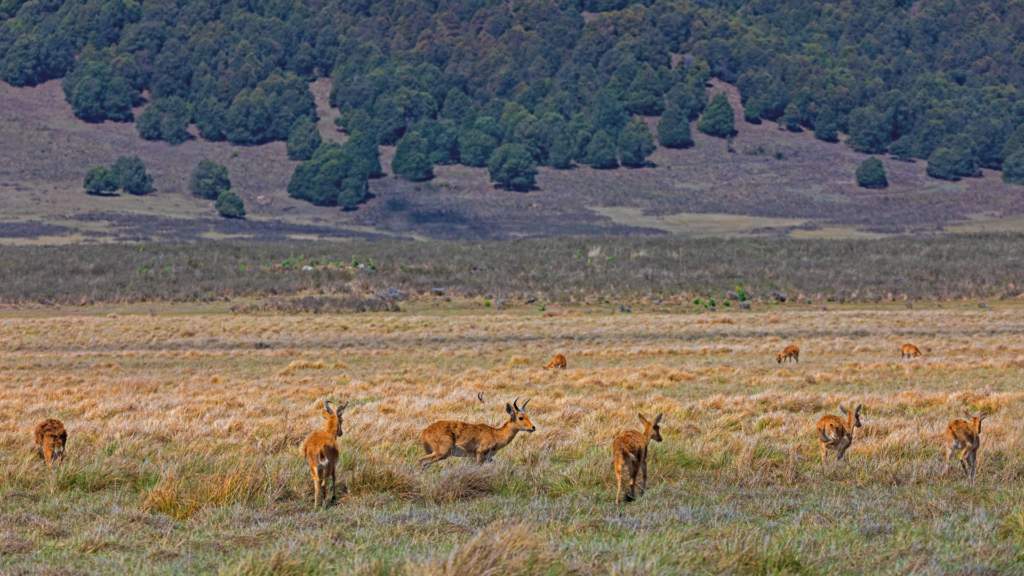
Cultural Tips for Hikers
Respectful behavior
- Dress modestly (shoulders and knees covered)
- Ask permission before photographing people
- Remove shoes when entering churches
- Women should cover heads in Orthodox churches
- Learn basic greetings in Amharic: “Selam” (hello), “Ameseginalehu” (thank you)
Unique cultural experiences
- Participate in a traditional coffee ceremony if invited
- Visit a local market on market day
- Experience an Ethiopian Orthodox church service
- Try local foods like injera (sourdough flatbread) with various stews
Practical Travel Information
Getting there and around
- International arrival: Addis Ababa Bole International Airport
- Reaching trailheads:
- Simien Mountains: Fly to Gondar, 3-4 hour drive to Debark
- Bale Mountains: Fly to Robe or 6-8 hour drive from Addis Ababa
- Danakil/Erta Ale: Fly to Mekele, specialized 4WD transport
- Tigray Churches: Fly to Mekele or Axum
- Wenchi Crater: 3-hour drive from Addis Ababa
Accommodation options
- Cities: Options from international hotels to budget guesthouses
- During treks:
- Simien Mountains: Established campsites, Simien Lodge (luxury option)
- Bale Mountains: Basic huts, camping, Bale Mountain Lodge
- Danakil/Erta Ale: Basic camping only
- Tigray: Small hotels in towns, homestays in some villages
Guide requirements
- Scouts mandatory in national parks
- Armed escorts required in Danakil
- Local guides required for Tigray churches
- Recommended: Trekking guide ($20-40/day), cook for multi-day treks
Budget considerations
- Budget experience: $70-100/person/day
- Mid-range experience: $150-250/person/day
- Luxury experience: $300+/person/day
- Guide tips: $5-10/day recommended
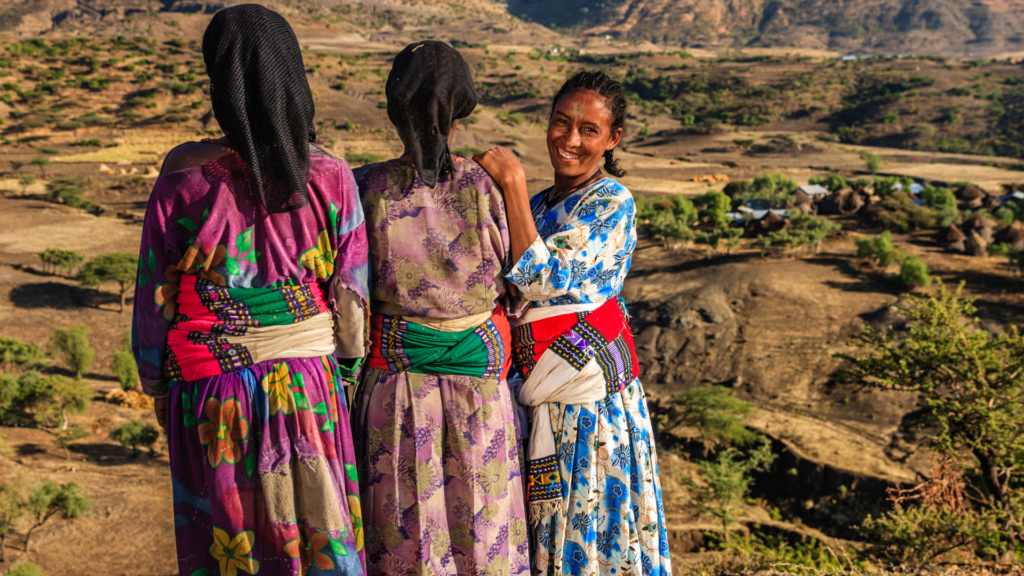
10 Tips for an Unforgettable Ethiopian Hiking Experience
- Start early: Begin hikes around sunrise for best conditions and wildlife viewing
- Acclimatize properly: Spend 1-2 days in Addis Ababa before heading to high elevations
- Stay hydrated: Drink plenty of water, especially at altitude
- Support local communities: Use local guides and porters
- Learn about the Ethiopian calendar: It has 13 months and is 7-8 years behind the Gregorian calendar
- Bring cash: ATMs are not available in remote areas
- Be flexible: Embrace “Ethiopian time” and expect the unexpected
- Pack for temperature swings: Days can be warm while nights get very cold at altitude
- Consider combining regions: Simien Mountains and Tigray churches make a great pairing
- Go now: Experience these remarkable landscapes before they become mainstream destinations
Safety Tips for Hiking in Ethiopia
- Check travel advisories before planning your trip
- Register with your embassy upon arrival
- Use reputable guides and tour operators
- Carry a basic medical kit
- Get appropriate vaccinations and medications
- Stay within your fitness and experience level
- Never hike alone in remote areas
- Be aware of altitude sickness symptoms
Why Ethiopia Should Be Your Next Hiking Destination?
Ethiopia offers adventurous hikers a rare opportunity to experience extraordinary landscapes and authentic cultural encounters far from the tourist crowds. From the breathtaking escarpments of the Simien Mountains to the otherworldly landscapes of the Danakil Depression, Ethiopia presents hiking experiences available nowhere else on Earth.
While facilities may be basic compared to more developed hiking destinations, the rewards – in terms of spectacular scenery, unique wildlife encounters, and cultural immersion – are immeasurable. As Ethiopia continues to develop its tourism infrastructure, now is the perfect time to experience these remarkable trails.
Whether you’re watching Gelada baboons against the backdrop of thousand-meter cliffs, observing rare Ethiopian wolves hunting on the Sanetti Plateau, or climbing to a church carved into a vertical cliff face, hiking in Ethiopia creates memories that will last a lifetime.

Additional Resources for Ethiopian Hiking Adventures
For more detailed information to enhance your Ethiopian hiking experience, consider these valuable external resources. The Ethiopian Tourism Organization (https://www.ethiopia.travel) provides official travel advisories and permit information. Bradt’s “Ethiopia” guidebook by Philip Briggs offers comprehensive regional details specifically for trekkers. For current trail conditions and community-based trekking opportunities, visit TESFA Tours (https://www.tesfatours.com), an organization promoting sustainable tourism in Ethiopia’s highlands. The Ethiopia Wildlife Conservation Authority (https://www.ewca.gov.et) provides updates on national parks and wildlife conservation efforts. For weather forecasts specific to Ethiopia’s mountain regions, Mountain Forecast (https://www.mountain-forecast.com) offers reliable predictions.








